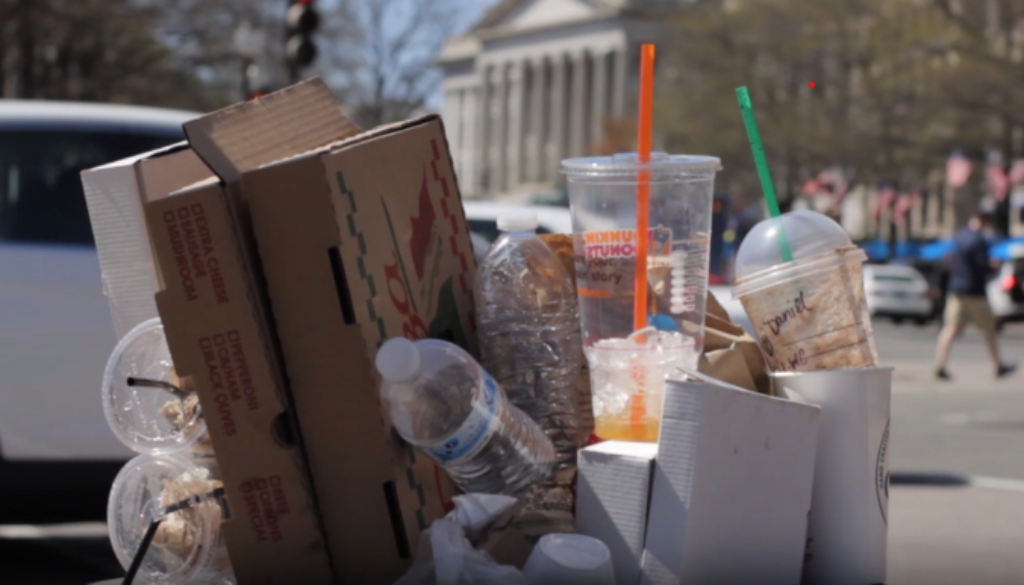Postcard from California: The global plastics crisis is a threat to human health
Last April, an annual assessment of the clarity of Lake Tahoe found it was the clearest it had been since the 1980s. But just months later, scientists reported that the iconic alpine lake straddling the California-Nevada border had alarming levels of a nearly invisible form of pollution: microplastics.
Microplastics are particles of plastic measuring less than 5 millimeters – roughly the size of a pencil eraser – generated largely from the breakdown of discarded plastic bottles and other plastic items. The US is the world’s largest generator of plastic waste, as people throw away more than 27 million tons of plastic annually.
In a study released last July, an international team of researchers found that Lake Tahoe had the third-highest concentration of microplastics out of 38 large lakes in 23 countries. Tahoe’s crystal blue waters held higher concentrations of microplastics than the floating garbage patches littering the world’s oceans, the study determined.
The researchers measured only relatively large microplastics – the width of a few human hairs or larger – not the “nanoplastics” that can be hundreds of times smaller. The Tahoe Basin has some of the most stringent environmental regulations in the US, suggesting that the probable source is airborne plastic particles from afar contaminating the snow that melts into the lake.
Microplastics’ threat to fish, marine mammals and other wildlife is well documented. Now there’s growing evidence that they’re also hazardous to people.
Last year, a report from the California State Policy Evidence Consortium commissioned by state legislators, raised concerns about microplastics’ suspected human health effects, including reproductive harm, respiratory problems and biological changes that could lead to intestinal cancer.
As The New Lede reported at the time, the consortium’s review of nearly 2,000 scientific studies relied mostly on studies of microplastics’ effects on rodents. But earlier this month, the New England Journal of Medicine published the first study to show that microplastics have a direct effect on human health.
An international team of doctors and researchers found that heart surgery patients whose arteries were clogged with microplastics were more than twice as likely to suffer a heart attack or stroke, or death from any cause, within three years after surgery.
Dr. Philip Landrigan an epidemiologist who directs the Program for Global Public Health and the Common Good at Boston College, told the Los Angeles Times the findings will “change the narrative” on plastic, just as many people saw global warming as an abstract issue until killer heatwaves, wildfires and floods brought the climate crisis close to home.
“This is a beginning… whereby people are going to see plastic is not just harmful to whales or sea turtles,” Landrigan said. “It’s not just litter on a beach in some faraway country. It’s in them and it has the potential to cause harm.”
In 2015, representatives of 196 nations met in Paris to hammer out the first international treaty on climate change. It, and the ongoing annual treaty conferences, have pushed some countries to either reduce or set targets for cutting their greenhouse gas emissions, although worldwide emissions continue to rise.
Now there’s the prospect of a similar pact to address the plastics crisis. Next month, delegates from more than 170 nations will gather in Ottawa, Canada, to continue talks toward a treaty to limit global plastics production, which in 2022 rose to more than 400 million metric tons.
In fact, the climate crisis and the plastics crisis are two sides of the same coin. Almost all plastics are made from chemicals derived from crude oil or so-called “natural” gas, and when they break down or are burned, they emit greenhouse gases. As the use of fossil fuels declines, the oil and gas industry is betting its future on plastics.
“Plastics is the Plan B for the fossil fuel industry,” Judith Enck, president of the nonprofit Beyond Plastics and a former regional administrator of the US Environmental Protection Agency, told CNBC.
The Ottawa meeting will be the fourth round of plastics treaty negotiations that began two years ago, and time is running short to meet the United Nations Environment Programme’s deadline for reaching an agreement by the end of this year. The political influence of the fossil fuel industry in major oil and gas-producing countries has stalled progress.
In December, the previous round of talks in Nairobi, Kenya, broke up in acrimony and disarray, according to Neil Tangri, science and policy director of the Global Alliance for Incinerator Alternatives (GAIA), who attended. (I have worked with GAIA as a consultant.)
In a blog post on GAIA’s website, Tangri wrote that one “high-ambition” group of countries – including members of the European Union and Global South nations most threatened by the climate crisis – demanded binding production limits and reductions, with the goal of ending plastic pollution by 2040.
A shadowy bloc of “like-minded countries,” believed to be led by Iran, Russia and Saudi Arabia, refused to negotiate in good faith. They pushed for only voluntary reduction targets and an emphasis on improved management of plastic waste, including more recycling and incineration.
Contrary to the decades-long disinformation campaign of the plastics industry, very little plastic is recycled, and much of it cannot be. Incineration of plastic not only emits greenhouse gases, but spews toxic pollution into communities near incinerators.
The US supports the goal of ending plastic pollution by 2040. But according to Inside Climate News, the US advocates “individual national action plans as opposed to strong global mandates,” and echoes the industry’s position on improved waste management.
Reliance on voluntary action by individual nations has held back the progress of the climate treaty, and it threatens to also kneecap a plastics treaty.
“If that’s where we are going (with plastics), that’s not going to solve any problems,” Bethany Carney-Almroth, a professor at Sweden’s University of Gothenburg and a leader of the Scientists’ Coalition for an Effective Plastics Treaty, told Inside Climate News.
“This is a very international problem,” she said. “[F]rom fossil fuels all the way through the production lines, all the way through our consumerism, all the way through waste, exports and transportation. If we don’t make a global tool to address that, we’re going to fail.”
We should all reduce our use of plastics and reject phony “recycling” programs that usually send plastic waste to a landfill or incinerator. But individual citizens and nations can’t solve the plastics crisis. We must require manufacturers to stop over-producing toxic plastics that are polluting our waters, land and air – and our bodies.
- Bill Walker has more than 40 years of experience as a journalist and environmental advocate. He lives in California’s San Joaquin Valley.
(Opinion columns published in The New Lede represent the views of the individual(s) authoring the columns and not necessarily the perspectives of TNL editors.)




